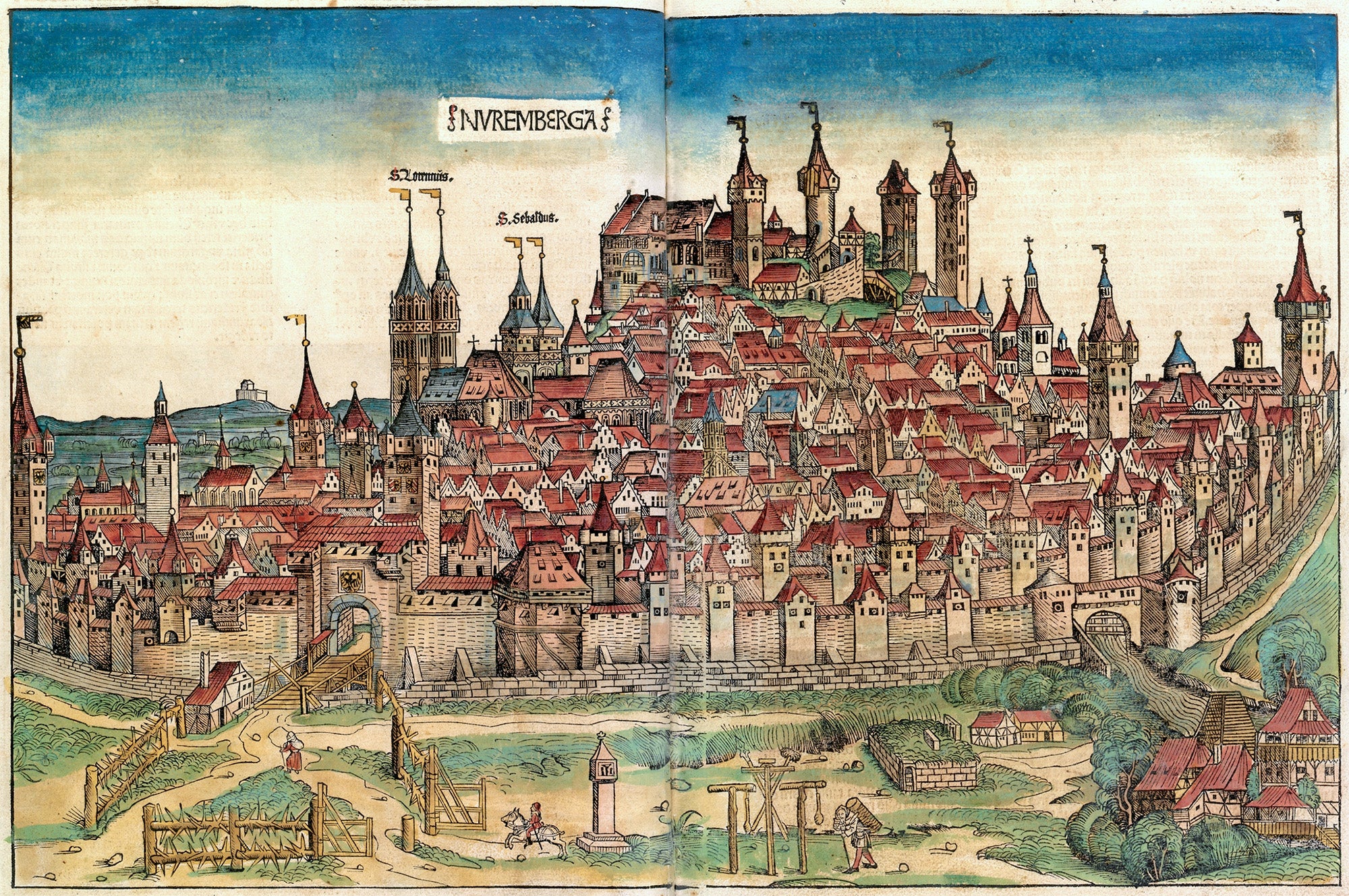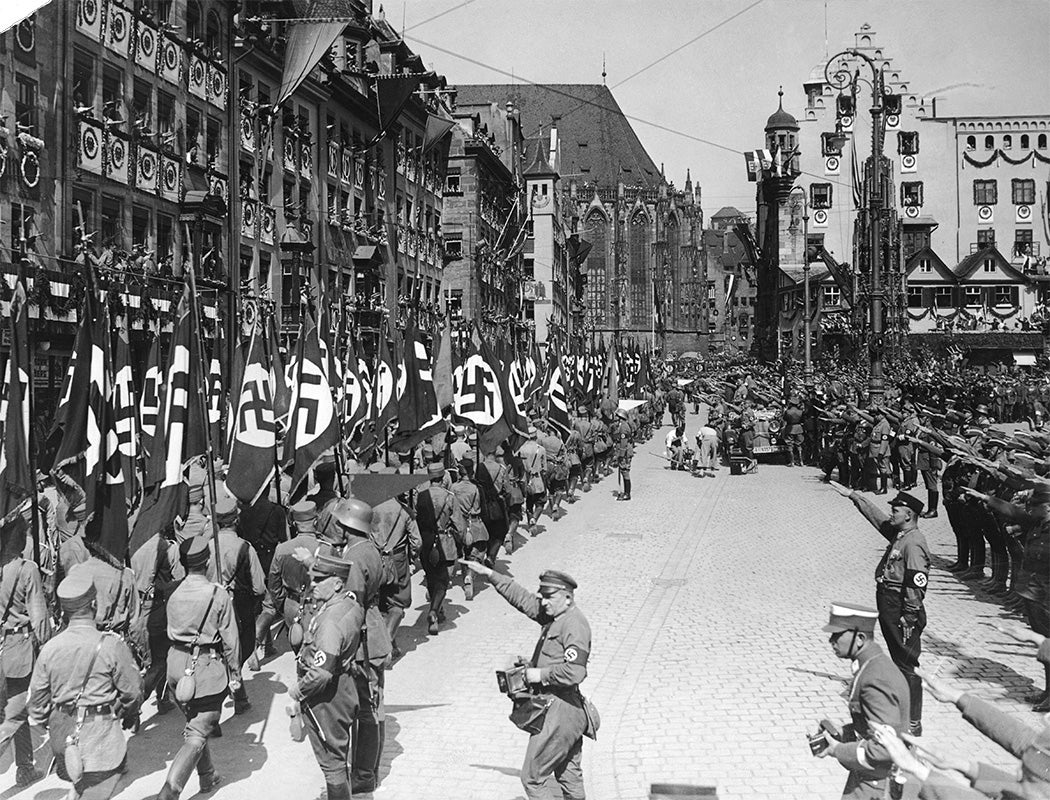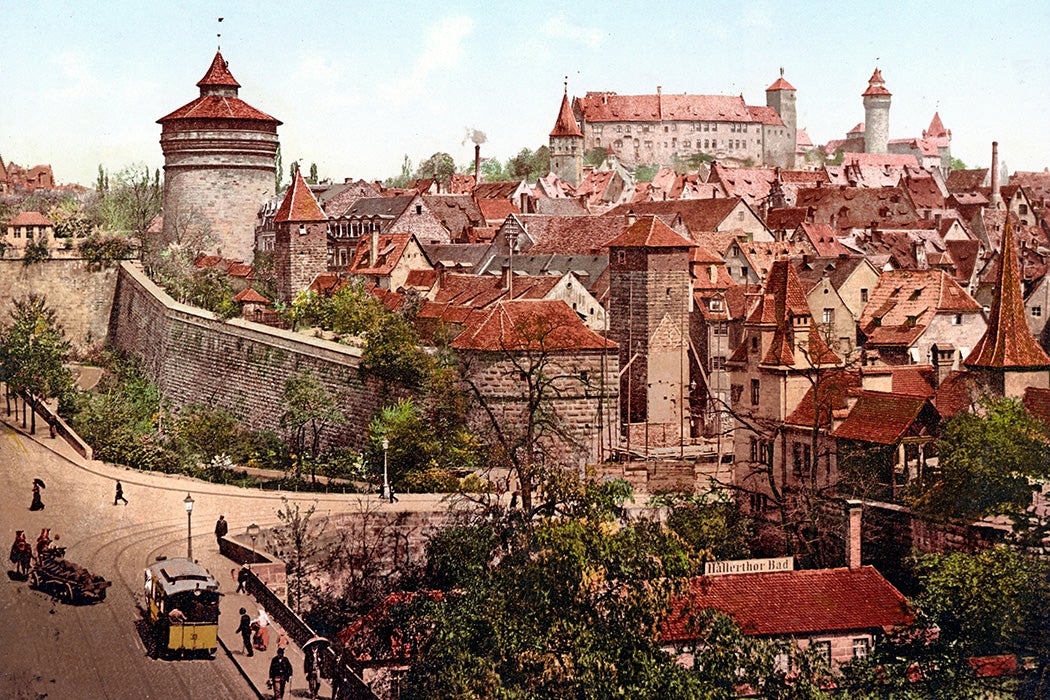Nuremberg has long been a city that has elicited strong opinion among those who have visited—or been ordered to travel to—this corner of urban Bavaria where both trade and tyranny have held sway at different points over the centuries.
“An ugly city,” wrote Mozart to a friend in 1790. Less taciturn was Hans Christian Andersen who referred to Nuremberg as the “quintessence of medieval culture.”
What’s certain is that the aesthetics of the city take second place to mercantile demands. At the same time the new emperors of the Holy Roman Empire were holding their Diet here (a custom that lasted until 1571), the ordinary burghers of the city were busy forging (quite literally) Nuremberg into one of Europe’s most important trading hubs.
This was achieved primarily through the skills of the native metalworkers. As social and economic historian Wolfgang von Stromer explains, the dominance of Nuremberg in trades including cloth and spices as well as metalware resulted in “privileges [that] brought wealth and wealth gave power, and…this power was really exercised in a very political way—as was hitherto not known except for the haute finance of Florence…”
Yet Nuremberg’s good times as a titular capital of commerce couldn’t last. The lack of a navigable river, the discovery of a sea passage to India, and the Thirty Years’ War all combined to usher in a period of soporific decline for the city, a factor that partially explains the well-preserved medieval structures that still pepper the city center today.

As quoted by Steward Spencer in the Cambridge Opera Journal, Richard Wagner saw the city at its most caliginous in 1861. Wagner described the first morning of that visit in his autobiography, writing
we went to see some of the sights of the town, last of all the Germanisches Museum, which was in such a wretched condition at the time that it earned the contempt of my French friend; though the large collection of instruments of torture, notably a box studded with nails, filled [Liszt’s daughter] Blandine with disgust, blended with compassion.
Yet it was around this time that Wagner decided to fully flesh out his idea for a comic opera in three parts. That opera was Die Meistersinger, set in Nuremberg. As he pointed out in a letter from the time, Wagner was depending on the fact that he had “struck the real nerve-centre of German life, and [had] done so, moreover, in a way which, having been recognized as original, is loved for precisely that reason, more especially abroad.”
Spencer explains “that Nuremberg should have been chosen to embody this ‘real nerve-centre of German life’ is no accident in view of the role that the town had come to play in Germany’s cultural history.” The city was so famous and “so potent was its image, so resonant its associations, that it scarcely required Wagner to visit Nuremberg at all to be aware of what it symbolized.”

Nuremberg’s role as a “nerve centre” continued into the twentieth century, with apocalyptic results. The most direct and terrifying insight into the megalomania and menace of the Nazi Party before 1939 remains with us through Triumph of The Will, the documentary film of the 1934 Nuremberg Party Rally made by Leni Riefenstahl.
Re-appropriating Nuremberg’s medieval history and former trading strength fed a Nazi narrative that claimed the Third Reich could restore and then impose Teutonic power across the globe. Nuremberg “had a long, romantic history and contained many historic features of architectural and cultural importance,” write Joshua Hagen and Robert Ostergren. Wagner certainly wasn’t alone in understanding the key role it played in the nationalist imaginary.
What remained was to convert it into a participatory landscape, in which spectacle and architecture might combine to legitimate and glorify the regime, enhance the personal charisma of Adolf Hitler, and imbue amongst the masses a strong sense of National Socialist community and purpose.
Thus, the choice of city is crucial to both the rallies and the subsequent film, writes Eric Rentschler in the 2009 edited volume The Arts in Nazi Germany: Continuity, Conformity, Change. Screenings of Riefenstahl’s work brought the mass ornaments of the rallies, the “fastidiously ordered lines of…hundreds and thousands of followers” to viewers across Germany.
“The mass ornaments of Nuremberg mean to dazzle and enthrall the viewer,” he explains. “Riefenstahl has learned from the crowd scenes of Fritz Lang’s Metropolis and Sergei Eisenstein’s Battleship Potemkin, as well as from Busby Berkeley’s kaleidoscopic swirls of bodies in motion.”
When the ensuing horrors of global war finally ceased, Nuremberg took on perhaps its most famous historical role, as the place of trial for the leading, surviving Nazis. Held at the International Military Tribunal during 1945 and 1946, the trials saw some 177 people indicted and tried for war crimes.
Laura Jockusch explores the reactions of Jewish people to the trials of these architects of the Holocaust in an article first published in the Fall 2012 issue of Jewish Social Studies.
“Many Jewish observers deemed the mere fact that key figures of the Nazi regime stood trial at Nuremberg to be a triumph over Nazism and to indicate some measure of historical justice,” Jockusch writes. “Although disappointed by the marginal role accorded to Jews at the trial—both as victims of the Nazi genocide and as a living nation—it was nonetheless a pivotal event for Jews.”
The site of those sinister rallies more than a decade before the trials hasn’t been destroyed by successive German governments and, although dilapidated, it’s still possible today to see the podium and grandstand upon which Hitler made his speeches in Nuremberg.
As Inge Manka from the Institute for Art and Design at the University of Vienna describes,
manifold forms of remembrance and various means of coping with the rally grounds as a place of memory are simultaneously visible in Nuremberg, showing that different ways of remembering do not necessarily have to exclude one another. The site activates several levels of meaning, the national being only one of them. The ambiguity of this site is therefore not a deficit of collective memory, but an opportunity on the path to a transnational place of commemoration.
Today, as Nuremberg attempts to make peace with its turbulent history, manifested in Renaissance stained glass and turrets as well as the grandiose follies of the Third Reich, the resulting mélange, as awkward as it can appear, is, to some, a place with oneiric properties attached to it.
Weekly Newsletter
This is what Stephen Brockman explores in his 2006 book Nuremberg: The Imaginary Capital. In a review of Brockman’s work, Ulrike Ehret notes Nuremberg’s double identity—it’s a real place with a real history, but it, like other cities, also exists as a dream, with “imaginary romantic origins.” Ehret writes that Brockman doesn’t “simply trace the roots of [these] romantic origins. Instead he analyses the varied expressions of German nationalism and national identity.” Brockman
finds in the differences between the “real” Nuremberg and its “dream” version and the communication between the two, “an entire nation and its myths.” In his eyes, it is important to recognize that this was a history of plurality, not singularity.
Such is Nuremberg’s status today; it’s a city that is more aware than most of the power of both dreams and nightmares.
Editor’s note: This story was updated to correct the spelling of “Hans Christian Andersen” in the second paragraph.







